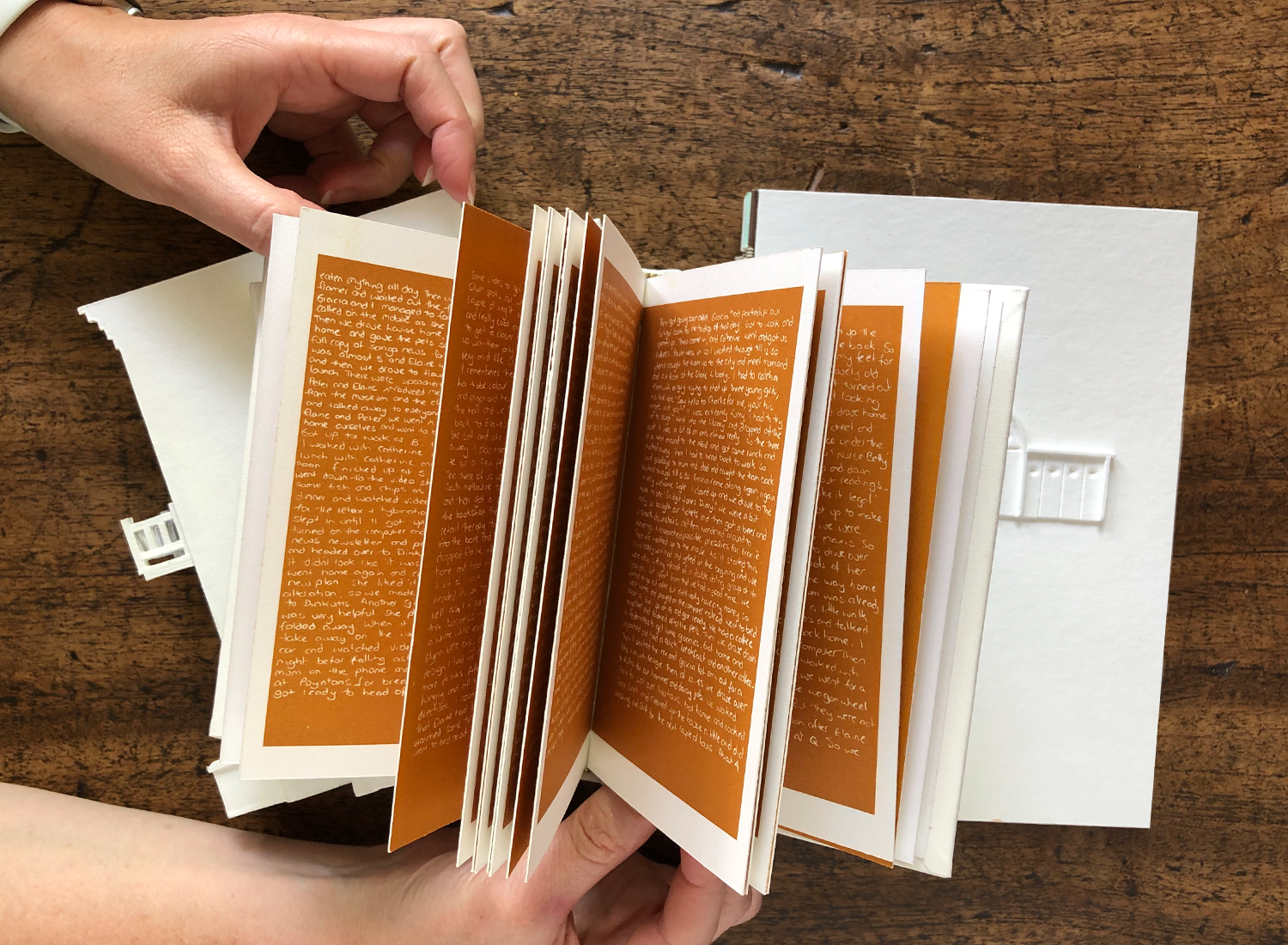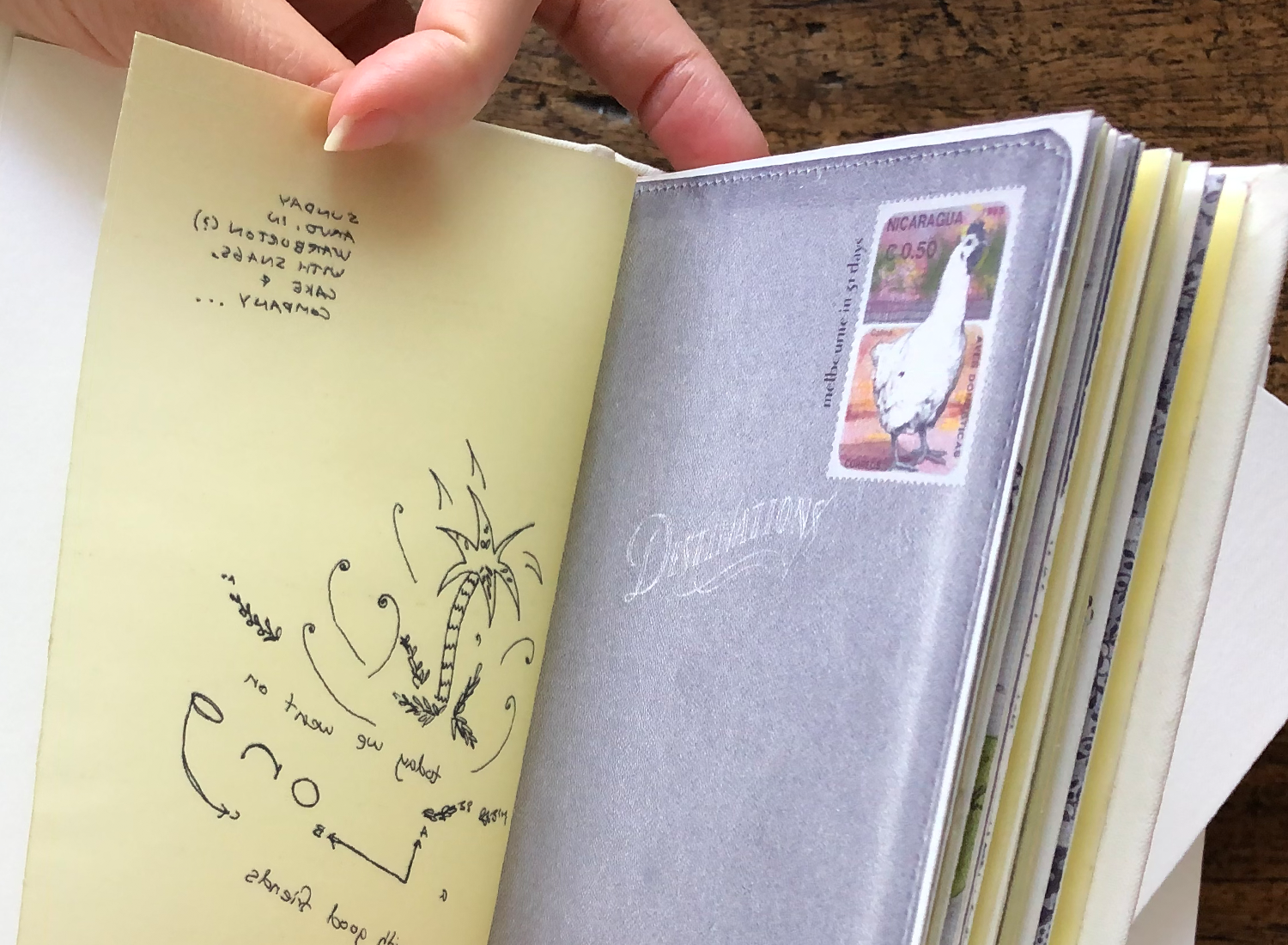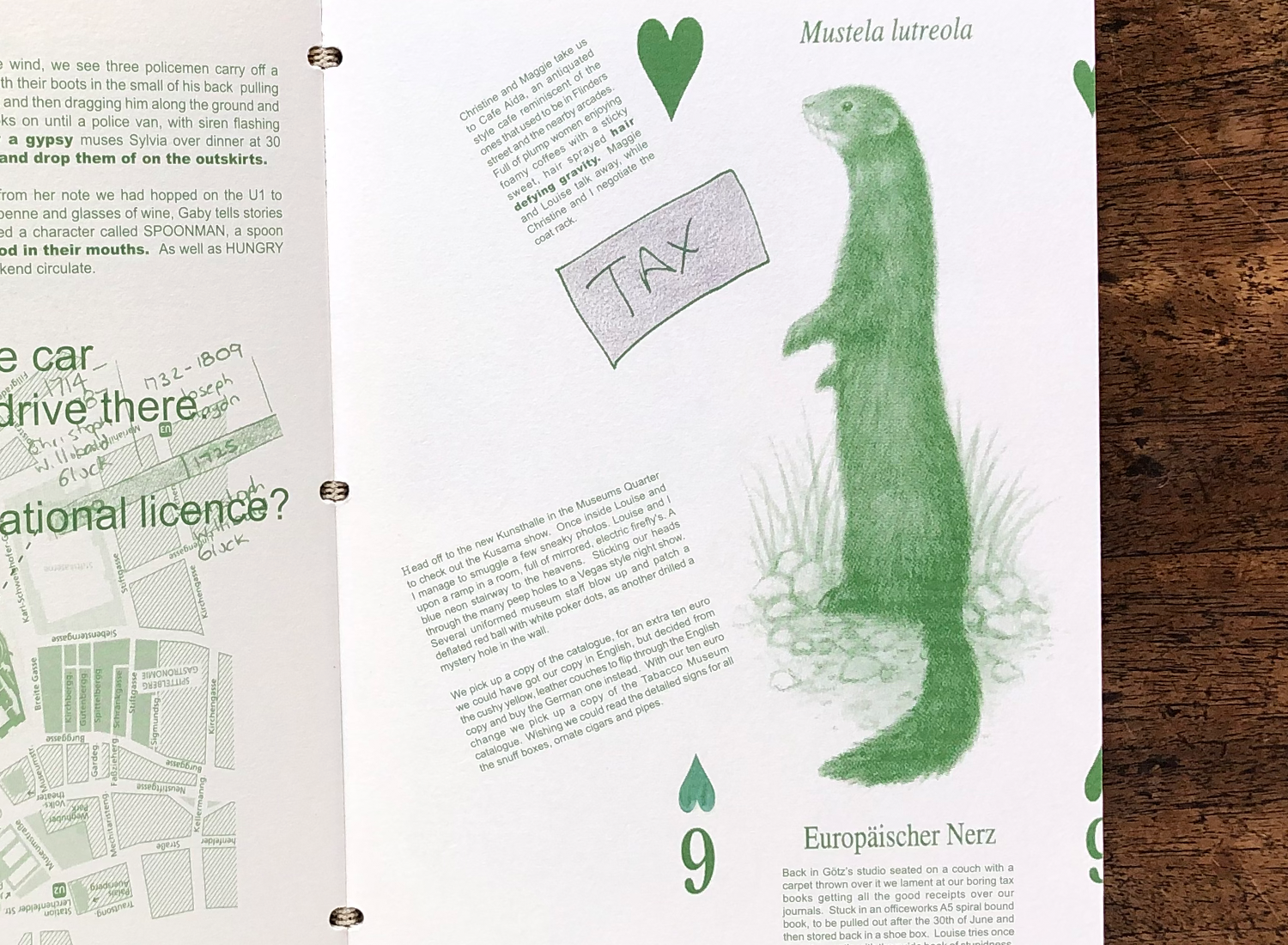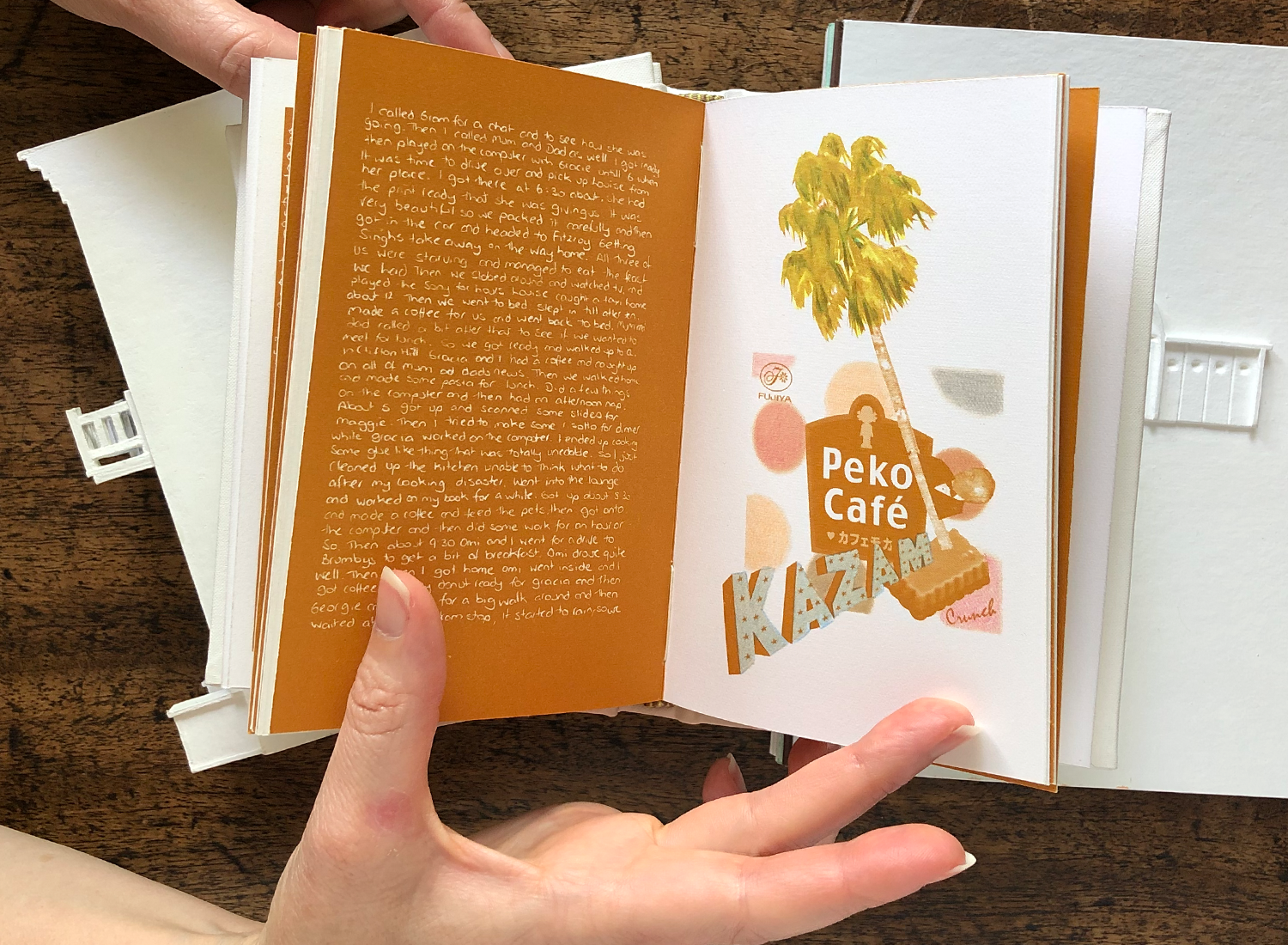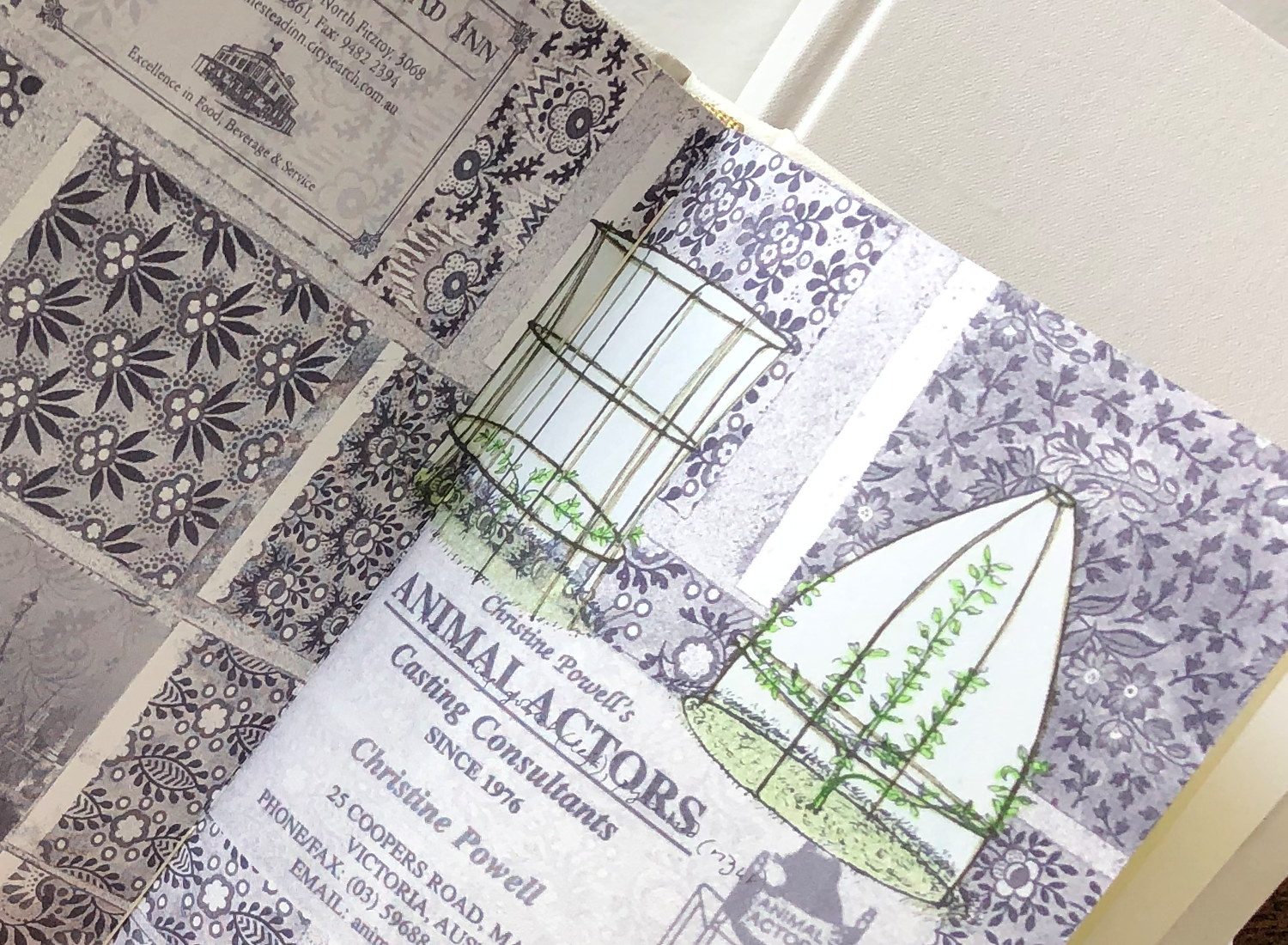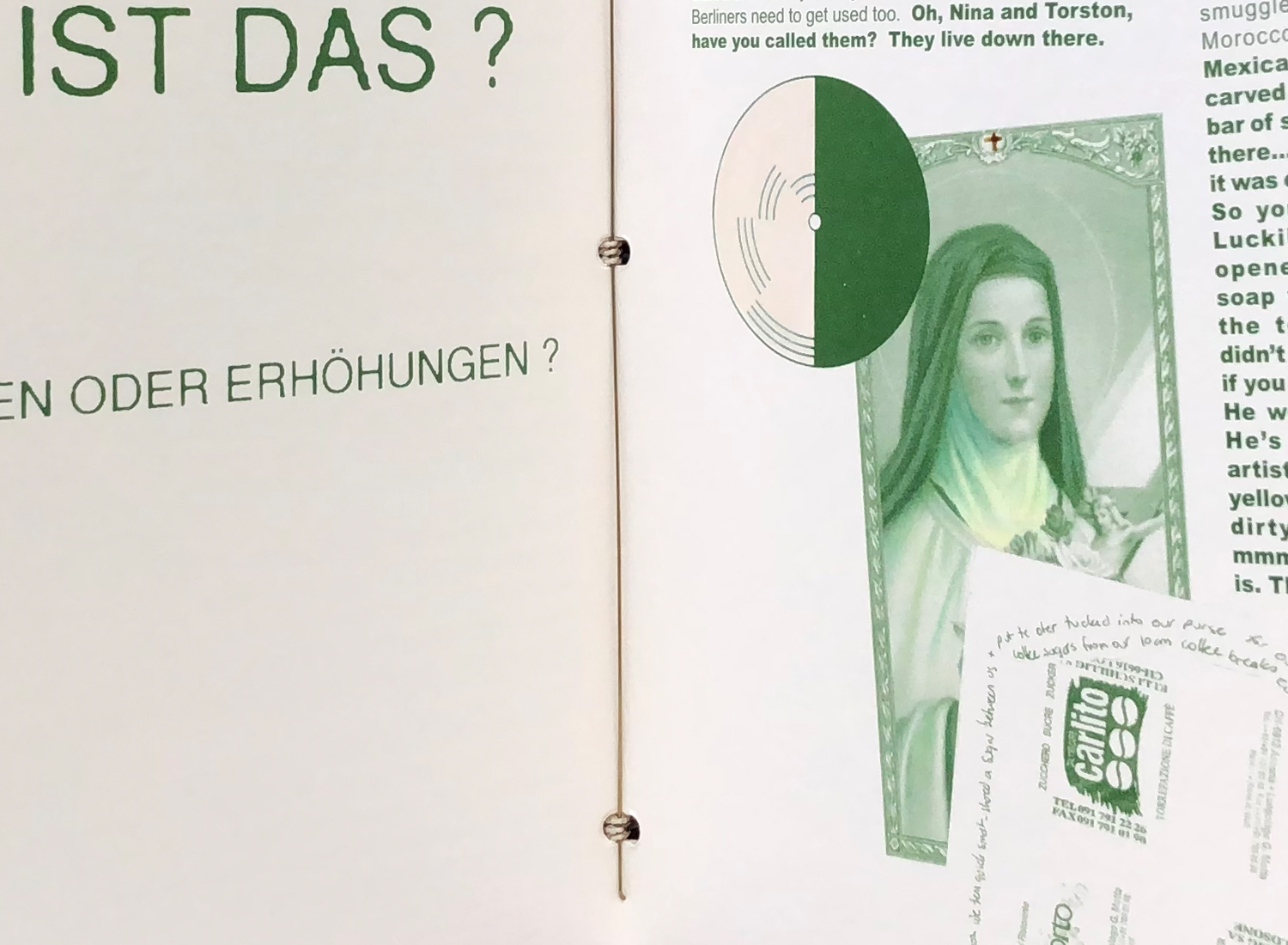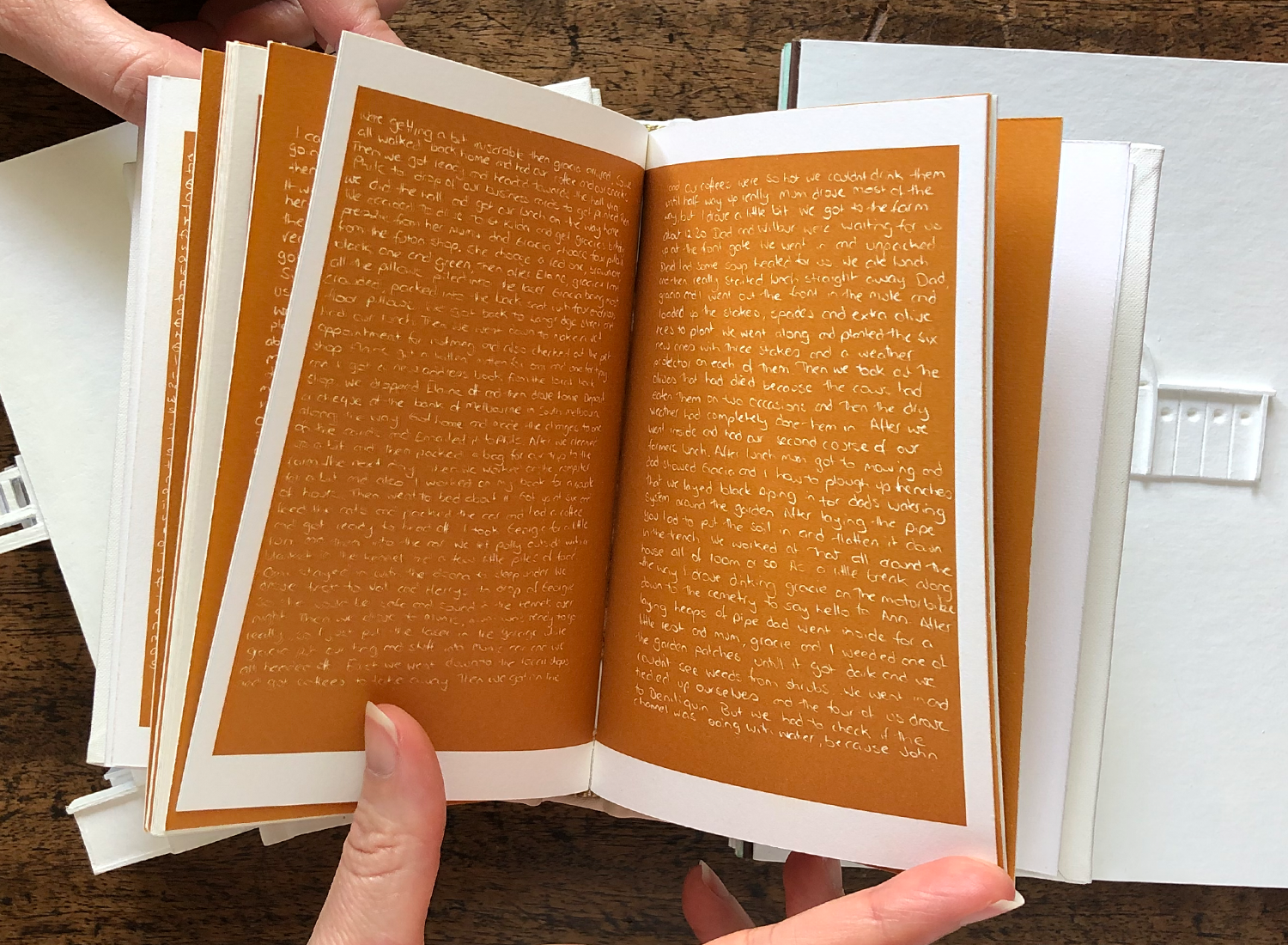A PAIR OF ARTISTS’ BOOKS, 2002–2003
1/ Gracia Haby & Louise Jennison
Melbourne in 31 days
2002
Text book:
Single-colour offset print hand-coloured with pencil on Magnani 100% cotton PESCIA 210 300gsm paper, 12cm X 15cm
Printed by Hart Printing
Bound in white canvas by Peter Stewart-Warmington
Edition of 5
Image book:
Single-color offset print hand-coloured with pencil on Magnani 100% cotton PESCIA 210 300gsm paper, with coloured tracing 80gsm paper inserts and ink drawings, 12cm X 15cm
Printed by Hart Printing
Bound in white canvas by Peter Stewart-Warmington
Text book and Image book housed together in a painted cardboard slipcase with a small model house constructed on the spine by Peter Haby
Edition of 5
Launched
Victoria Room, Melbourne Town Hall, Swanston Street, Melbourne
Wednesday 12th of March, 2003
Melbourne in 31 days was launched alongside 30 days in Vienna in the Victoria Room of the Melbourne Town Hall. Both are in the collection of the State Library of Victoria.
Melbourne in 31 days was also exhibited as part of Global Fusion at Palais Porcia, Vienna, early 2002. It was later shown in the 2002 National Works on Paper, Mornington Peninsula Regional Gallery, Victoria, and in 2003 as part of Act XII: new works on paper, alongside 30 days in Vienna.
Melbourne in 31 days and 30 days in Vienna have since been exhibited as part of State Library Victoria’s permanent exhibition, Mirror of the World: books and ideas, in 2015.
2/ Gracia Haby & Louise Jennison
30 days in Vienna
2003
Artists’ book, single-colour offset print hand-coloured with watercolour and pencil on Magnani PESCIA 2021/P 100% cotton 300gsm paper, with Japanese lace 25gsm paper and coloured tracing 80gsm paper, 13cm X 21cm
Printed by Hart Printing
Bound in vintage fabrics by Peter Stewart-Warmington
Edition of 10
Many thanks to Peter Haby for generously agreeing to create cardboard magic on the five slip cases for Melbourne in 31 days, featuring the narrowest house in New Orleans on the spine, and upon the cover of 30 days in Vienna, depicting a miniature version of the Karl Splatz Railway entrance.
Thanks to the City of Melbourne for having us in the splendour of The Victoria Room one evening in March. And to Paula Cowling for providing us with a delectable feast of sweet Viennese-style biscuits and shortbreads for the launch.
One Month – Melbourne Vienna
Catalogue essay
Georgia Cribb
2002
One month can zip by without notice or drag on for eternity. Occurrences within the month are sometimes remembered, but through the space of time, these memories can become distorted or blurred. Those who keep a diary might have a better sense of events gone by, however diaries are usually selective, mostly recounting significant highlights or misfortunes and rarely discussing the menial tasks undertaken on a daily basis. Most importantly, diaries are private and written only for the writer, not an audience.
Louise Jennison and Gracia Haby, two Australian artists, live together and often collaborate in creative projects. These two artists create a new body of work that documents their experience of one month and present it publicly as part of Global Fusion, an urbanart International Public Project shown at two different exhibition spaces, Palais Porcia and Wienstation, Vienna, Austria in 2002.
The documentation of events and experiences that occur within varying time-frames is a theme previously explored by the artists, specifically in a series of six artists books created in 2000–01. Nao falo Portugese, a book created out of Jennison and Haby’s travel experiences through Portugal in 2000 and The ermines tea party – one weekend, an account of how both the artists and their friends and family spent one weekend, are two examples from the series.
Haby and Jennison's new work has three components — two artists books, Melbourne in 31 days and 30 days in Vienna, and a performance undertaken at the Wienstation, Vienna in March 2002. The first component of the work, an artists’ book, was undertaken in September 2001 and documents the artists’ experience of one month in their home-town of Melbourne. The second component is the performance occurring in Vienna in early 2002, during which the artists recount the experience of one month in Melbourne and both document and present their experience of one month in the city of Vienna. The final stage is the compiling of the Vienna material into the second of the artists’ book 30 days in Vienna on their return to Melbourne in mid 2002.
The artists’ book Melbourne in 31 days exists in two parts — a hand-written narrative of the artists’ experiences over the period of one month around Melbourne as documented by Jennison, with the second a visual collage of ephemera collected during the same period by both artists. The artists self-consciously document their home life, both public and private, selecting and discarding much over the month long period.
Jennison’s narrative in Melbourne in 31 days is written in the first person, beginning with waking up and finishing with going to sleep one month later. The text is written in one continuous stream documenting in detail daily activities such as feeding pets and cooking dinner. The text immerses us for a period of time in the life of the artist, experiencing her daily routine and her interaction with Haby and other friends and family.
The second part of the Melbourne in 31 days is comprised of visual material including receipts from various purchases, tickets, handwritten notes from friends and family and photographs, all sourced within the same month. Once collected, the artists have sorted the material chronologically, scanned the material onto computer,creating a digital visual diary which was printed and bound into a book. Finally pages were hand-coloured, and additional material such as stamps and ephemera were added. This process illustrates the artists' experiences from one month.
Melbourne in 31 days, which is displayed in an antique hat-box, is shown in the Palais Porcia Vienna, along side an aeroplane case containing the first six books created by the artists.
The performance component begins with Jennison re-writing the narrative component of Melbourne in 31 days on the windows of Wienstation, Vienna. Simultaneously, Haby is compiling a written description of the artists' experience of living and working in Vienna during a period of one month, and begins to transcribe this text on the same windows. In turn, Jennison returns to slowly erase her experience of Melbourne, blurring the account of life in one city with another. As an adjunct to this performance, a box is provided in the exhibition space in which visitors to the exhibition are asked to donate mementos, souvenirs and thoughts from their daily lives. This visual material will be sorted and combined with ephemera collected by the artists into the second half of the book. This, together with Haby’s Vienna text, replicating the same format of Melbourne in 31 days, is the basis for 30 days in Vienna, to be produced on the artists return to Melbourne in mid 2002.
Louise Jennison and Gracia Haby’s project raises the question how does experience of one month in a city differ from any other? The artists have created a body of work from multiple perspectives — two different people living alternatively as residents and tourists in two different cities and two different time frames. This project reminds us that experience of one month in one city is always subjective.
Although we may not consciously recognise it, we have a personal relationship with a city. Different locations remind us of events or interactions that have occurred there. Most often, when we approach a new city as a tourist we look upon this destination as a site that in the future will stimulate memories of time and circumstance. Whether from Vienna or Melbourne, observers encounter this body of work from one of two perspectives — as a resident or a foreigner. The artists’ account of one month in our home city lets us see it from a new perspective, whilst of the tourist we are reminded of the possibilities a city can hold.
For the observer, the time frame of one month is experienced through Jennison and Haby’s body of work in minutes or hours depending on how the exhibition is becomes an abstract idea that merely frames the beginning of one experience with the end of another.
